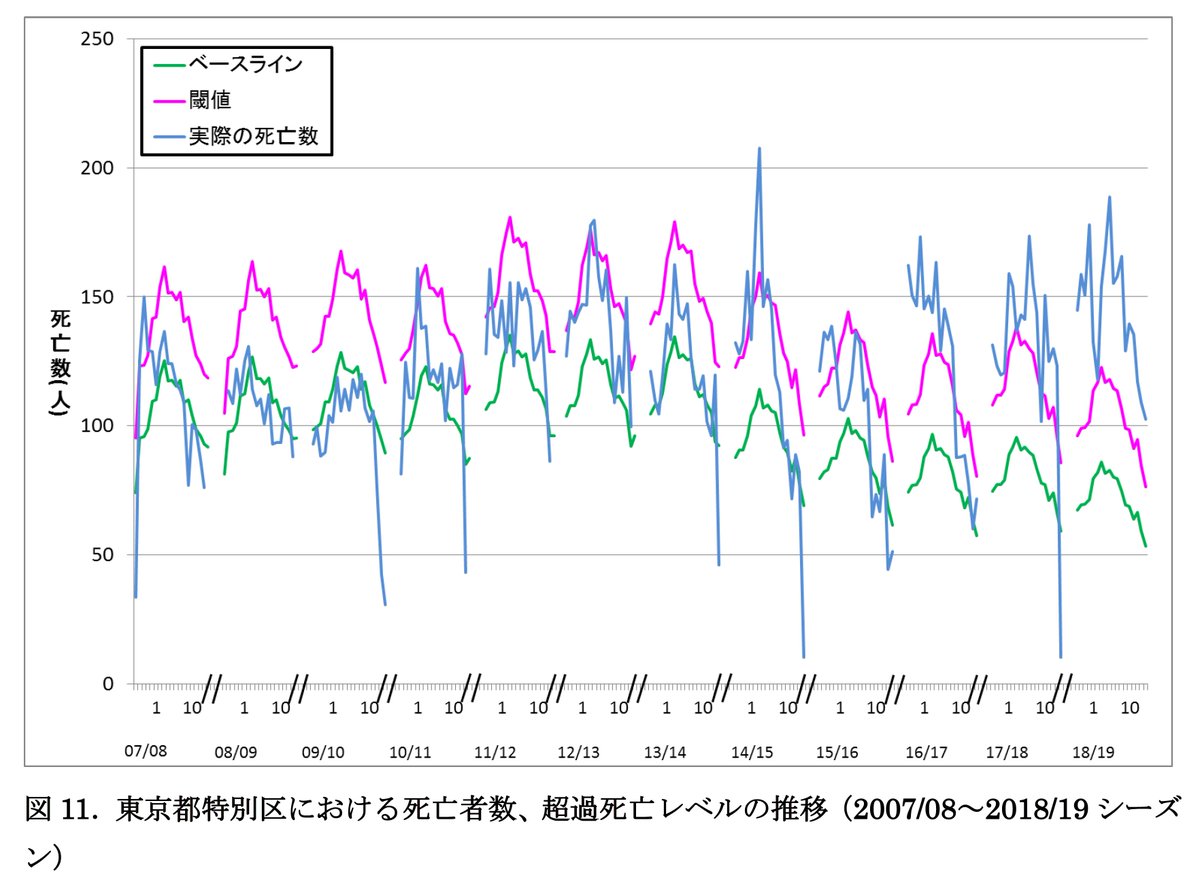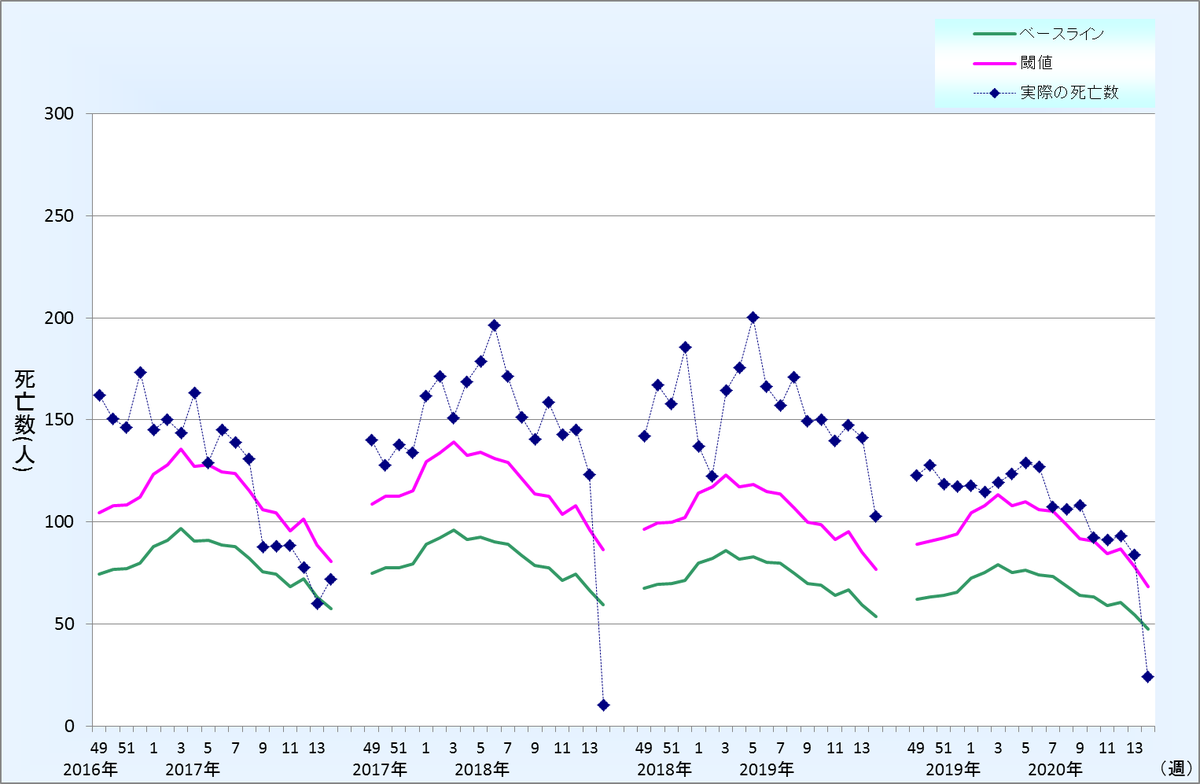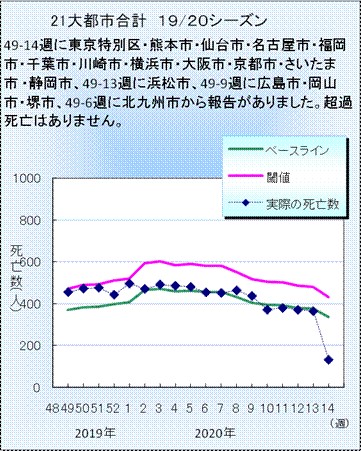Nikkei seems to have revived the debate about excess mortality due to COVID-19 in Tokyo with this article: https://www.nikkei.com/article/DGXMZO59508030U0A520C2NN1000/">https://www.nikkei.com/article/D... A few things to say below:
It argues that excess mortality from influenza/pneumonia in the Tokyo area is around 200 deaths (cumulative total) above baseline based on data from National Institute of Infectious Diseases (NIID).
Given the less severe influenza season this year, the assumption made by Nikkei is that excess deaths in March and April above baseline in Tokyo should be attributed to COVID-19. Maybe, maybe not.
First, to put things in international context, most countries have been finding excess mortality that would suggest real COVID-19 fatalities are around 50-100% of official numbers. But it is still a function of this number, whether it is high or low.
I see no reason why Japan/Tokyo would be any different. Tokyo is currently registering 271 COVID-19 deaths. NIID actually uses a margin of error rather than the baseline in order to estimate excess mortality in-season. Excess mortality is around 100-150 over that same time period
Even if we assume all & #39;excess& #39; deaths can be attributed to COVID-19, a figure of 37%-55% is comparable with the rate of & #39;error& #39; we see overseas.
Nevertheless, NIID is adamant that this system (in place for 2 decades) cannot be used to estimate excess mortality from COVID-19. They may have a point...but mainly because of some curiosities in how they manage and present this data.
The Nikkei article asserts that the basis for comparison is derived from from past data. This is debatable. In fact, (and I don& #39;t know why they would do this), NIID has reduced the comparative baseline for measuring excess mortality over the years for Tokyo. ↓
This is despite the aging population and despite influenza becoming more deadly in Japan (and many places) worldwide over the last few years.
I pulled up this figure from p.21 here: https://niid.go.jp/niid/images/idsc/disease/influ/fludoco1819.pdf">https://niid.go.jp/niid/imag...
I pulled up this figure from p.21 here: https://niid.go.jp/niid/images/idsc/disease/influ/fludoco1819.pdf">https://niid.go.jp/niid/imag...
It shows that the baseline and & #39;excess mortality& #39; margin of error lines are both much lower than a decade ago for Tokyo. And Tokyo has thus exceeded the baseline for influenza/pneumonia deaths every year since 2010.
And the margin of error & #39;excess mortality& #39; line was exceeded in 4 out of the 5 past years. This figure shows it a bit more clearly for recent times and includes this year at the end: https://www.niid.go.jp/niid/ja/from-idsc/9627-jinsoku-qa.html">https://www.niid.go.jp/niid/ja/f...
So if you look at Tokyo& #39;s & #39;actual fatalities& #39;, they are actually lower than past years *based on this reporting mechanism*. In fact, last year saw numbers as high as 2-3 times baseline (one week alone showing around 120 deaths above baseline, 80 to the MOE line).
Using the MOE line suggests over 900 cumulative & #39;excess& #39; fatalities for 2018-2019 versus around 100-150 for this year. For 2016-2017 it was around 300 excess deaths, and for 2017-2018, over 500. Doesn& #39;t really seem like the baseline is based on past year data all that much...
Again, I don& #39;t know the rationale for NIID having such a low baseline given that it should be increasing both on the basis of past data and demographic trends.
For the national figures, things are trending along the baseline except for the early season, and below the MOE line throughout. https://www.niid.go.jp/niid/ja/flu-m/2112-idsc/jinsoku/1847-flu-jinsoku-2.html">https://www.niid.go.jp/niid/ja/f...
If you look at the individual reporting units (21 major municipalities), you will notice some do not display data for the last few weeks, and some not at all.
In place of missing data from reporting units, the NIID apparently factors in past averages when calculating the national numbers. Sub-optimal, but better than inputting a zero score for comparative purposes. By June or July the national data should be & #39;filled out& #39; better.
To be sure, all of this is not an argument for no excess mortality in the Japan case. The actual situation should be better grasped later by the more robust MHLW data and it may show excess mortality. But I think the Nikkei article was somewhat off in its analysis of this data.

 Read on Twitter
Read on Twitter




